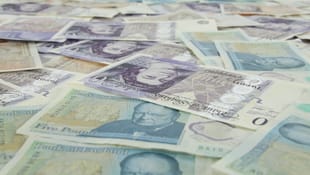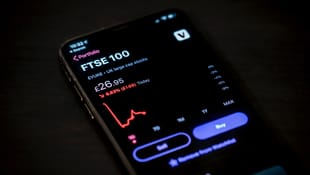3 Insights From Q3 Earnings, And What It Means For The Quarter Ahead
Investors enjoyed a bit of stability last week. The S&P 500 is now approaching its 200-day moving average and has risen over 10% since its October lows...

Last week was a bit of a roller coaster for US markets with mid-term elections and inflation data driving the moves...

You’d be forgiven for feeling a bit of Deja Vu this past week since the Fed raised rates again by 0.75% for the 4th consecutive time this year. Add to that the heavy selling in some big name tech stocks, and you might be feeling evern more Deja Vu, but of the Dotcom bust variety.

Rishi Sunak, a former hedge fund manager, takes over the reigns as the UK's new PM; Chinese stocks battered as President Xi Jinping shows no signs of stepping down; The challenges for awaiting UK's new PM

Compared to last week’s sea of red, investors appear a lot more optimistic this week with all sectors in the green. Financials led the way after some of the banks reported expected quarterly results. The telecoms sector also had some good news for a change with Netflix (Nasdaq:NFLX) surprising investors and reporting better subscriber numbers.

Market volatility picked up again last week after the Bank of England said it will end its bond buying on Friday...

Credit default swaps on Credit Suisse's bonds reach all-time highs; Risks and opportunities when investing in financial institutions; Analysts reduce EPS estimates on S&P 500 companies; Q3 earnings season about to commence

GBP crashed due to new government policy; Check out the stock market's good news amidst all the bad; Difference between monetary and fiscal policy

U.S. real estate is in deep recession, Fed lifts rates by another 0.75%; What are housing bubbles and where are the world's bubbliest housing markets?

The S&P 500 and Dow this week both experienced their worst plunge in one day; the U.K. may be entering recession earlier than expected; several stocks hit their Covid lows this week; Energy price subsidy by U.K. PM

Russia cuts Europe off its supply as retaliation for all the sanctions; Economic effects on energy without Russia; What are negative interest rates? Denmark moving out of negative interest rates after a decade; Australia and ECB rate hike

Fed's Powell crashed global stock markets with just a few words; Rate cuts are not happening anything soon; How to invest when the Fed is being hawkish; Emerging markets have experienced big drops; Tips for investing in emerging markets


